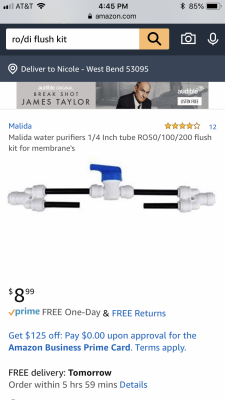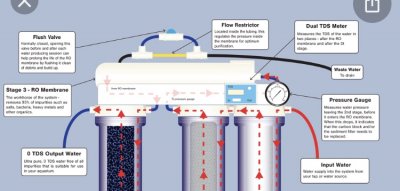- Joined
- Dec 5, 2017
- Messages
- 2,888
- Reaction score
- 4,374
I have this system and added a di bypass as Opus described, but no other flushing mechanism.
A flush kit just lets the water go to the waste side of the RO. That gives the water a path of less resistantes to go to so it doesn’t go through the DI. A flush kit is not really bypassing the DI. What you are calling a bypass is a flush kit. Yes it flushes TDS creep out of the waste section as well which helps make the Di last longer. Every time you open the valve rather you want to or not you are flushing the membrane.


Last edited:

















